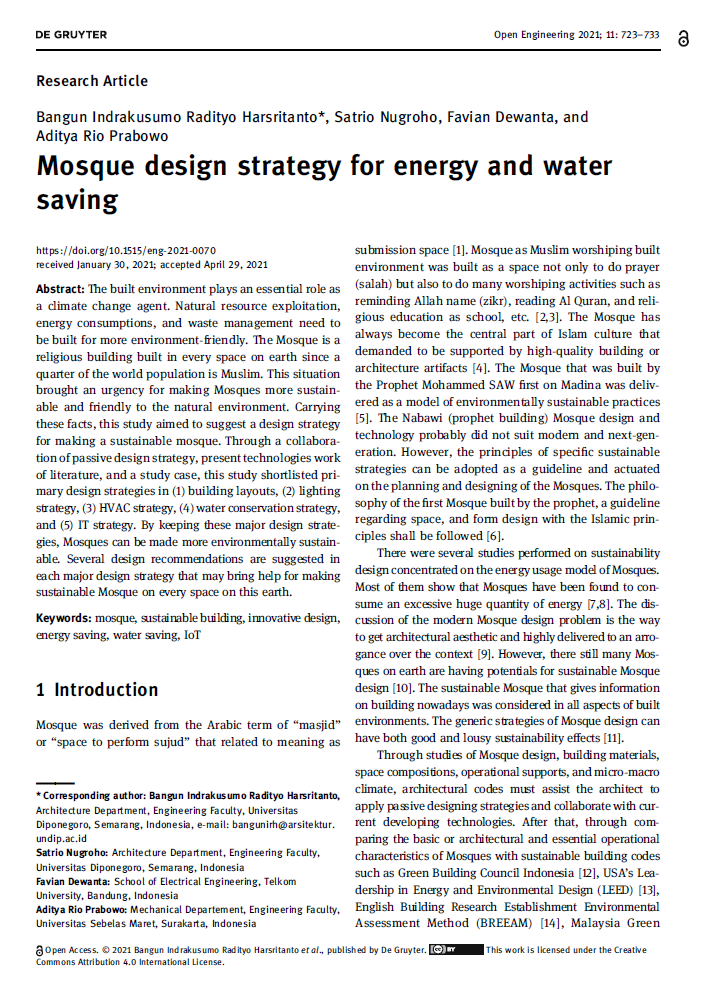
The built environment plays an essential role as a climate change agent. Natural resource exploitation, energy consumptions, and waste management need to be built for more environment-friendly. The Mosque is a religious building built in every space on earth since a quarter of the world population is Muslim. This situation brought an urgency for making Mosques more sustainable and friendly to the natural environment. Carrying these facts, this study aimed to suggest a design strategy for making a sustainable mosque. Through a collaboration of passive design strategy, present technologies work of literature, and a study case, this study shortlisted primary design strategies in (1) building layouts, (2) lighting strategy, (3) HVAC strategy, (4) water conservation strategy, and (5) IT strategy. By keeping these major design strategies, Mosques can be made more environmentally sustainable. Several design recommendations are suggested in each major design strategy that may bring help for making sustainable Mosque on every space on this earth.
Harsritanto, Bangun Indrakusumo Radityo, Satrio Nugroho, Favian Dewanta, and Aditya Rio Prabowo. “Mosque design strategy for energy and water saving.” Open Engineering 11, no. 1 (2021): 723-733.
I agree to the terms outlined below:
You agree to upload and assign Mosqpedia Database the rights to use the content worldwide and in perpetuity across all current and future media platforms. Mosqpedia Database may edit, copy, adapt and translate your contribution.
The content will be distributed under the Creative Commons Attribution-Deed – Attribution-NonCommercial-NoDerivatives 4.0 International – Creative Commons
All data will be stored in line with data protection regulations.